
Dactyloceras lucina is a species of very large moth of the family Brahmaeidae. It is found in central and west Africa, where it has been recorded from Equatorial Guinea, Ghana, Ivory Coast, Kenya, Sierra Leone, Uganda and Zambia. The species was first described by Dru Drury in 1782.
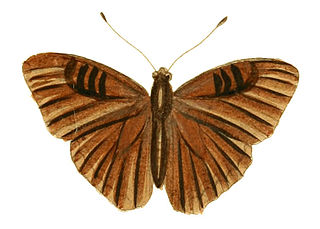
Euriphene doriclea, the Doriclea nymph, is a butterfly in the family Nymphalidae. It is found in Sierra Leone, Liberia, Ivory Coast, Ghana, Nigeria, Cameroon, Gabon, the Central African Republic, the Democratic Republic of the Congo and Uganda. The habitat consists of forests.

Euphaedra perseis, the Perseis mimic forester, is a butterfly in the family Nymphalidae. It is found in Guinea (Conakry), Sierra Leone, Liberia, Ivory Coast and western Ghana. It was first described by Dru Drury in 1773.
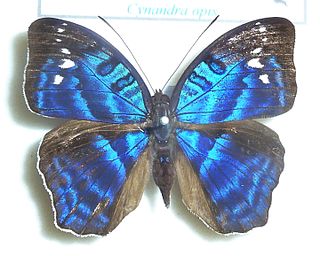
Cynandra opis, the brilliant nymph, is a butterfly in the family Nymphalidae. It is the only species in the monotypic genus Cynandra. It is found in Guinea, Sierra Leone, Liberia, Ivory Coast, Ghana, Togo, Nigeria, Cameroon, Gabon, the Republic of the Congo, the Central African Republic, Angola, the Democratic Republic of the Congo, Uganda and Tanzania. The habitat consists of dense forests.

Pseudacraea hostilia, the western incipient false acraea, is a butterfly in the family Nymphalidae. It is found in Sierra Leone, Liberia, Ivory Coast and western and central Ghana. The habitat consists of wetter forests.
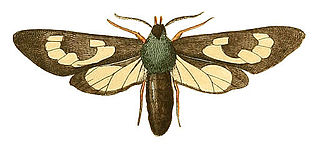
Cosmosoma fenestrata is a moth of the family Erebidae. It was described by Dru Drury in 1773. It is found on Jamaica and Cuba.

Trichura coarctata is a moth in the subfamily Arctiinae. It was described by Dru Drury in 1773. It is found in Brazil.
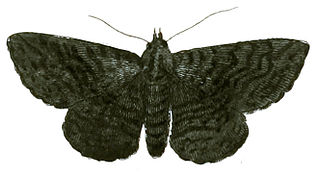
Zale undularis, the black zale moth, is a moth of the family Noctuidae. The species was first described by Dru Drury in 1773. It is found in the eastern United States and southern Ontario.
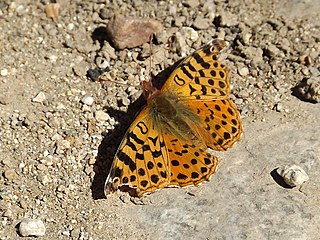
Yramea cytheris is a species of butterfly in the family Nymphalidae. It was first described by Dru Drury in 1773 from the Falkland Islands. In some systems it is included in genus Issoria.

Pitthea famula is a species of moth in the family Geometridae. It was first described by Dru Drury in 1773 from Calabar, in what is now Nigeria. It is found in Angola, Benin, Cameroon, the Republic of the Congo, the Democratic Republic of the Congo, Equatorial Guinea (Bioko), Nigeria, Sierra Leone and Zambia.
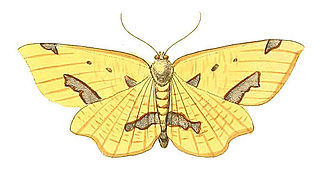
Xanthotype sospeta, the crocus geometer, is a species of moth in the family Geometridae. It was first described by Dru Drury in 1773 from Jamaica. It is also found in North America, where it has been recorded from Nova Scotia to southern British Columbia, south to Colorado and Georgia. The habitat consists of deciduous and mixedwood forests.

Letis hercyna is a species of moth in the family Erebidae. It was first described by Dru Drury in 1773 from Jamaica.

Otroeda cafra is a species of moth in the tussock-moth subfamily Lymantriinae. It was first described by Dru Drury in 1782 from Sierra Leone, and is also found in Cameroon, DR Congo, Malawi, and Nigeria.

Panara jarbas is a species in the butterfly family Riodinidae found in Brazil. It was first described by Dru Drury in 1782.

Pseudobunaea alinda is a species of very large moths in the family Saturniidae. The species was first described by Dru Drury in 1782, and is found in Angola, Cameroon, Congo, DR Congo, Gabon, Guinea, Ivory Coast, Sierra Leone, and Tanzania.

Lobobunaea phaedusa is a species of very large moths in the family Saturniidae. It is found in much of sub-saharan Africa, where its host plants include African custard-apple, crown-berry, and Aframomum spp.
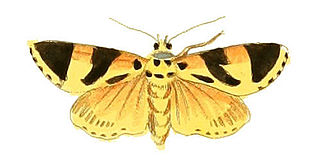
Attatha ino is a species of moth of the family Noctuidae. It was described by Dru Drury in 1782 from "Madras".
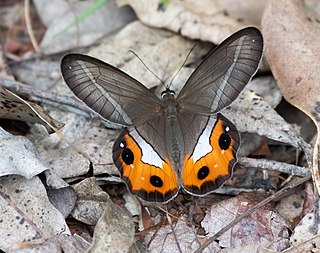
Pierella nereis is a butterfly species from the subfamily Satyrinae in the family Nymphalidae. It was first described by Dru Drury in 1782 from Brazil.
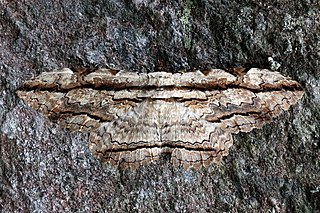
Thysania zenobia, the owl moth, is a species of moth in the family Erebidae. The species was first described by Pieter Cramer in 1776, and is native to North and South America and the Caribbean.

Lyssa patroclus is a species of moth in the family Uraniidae. The species was described by Carl Linnaeus in his 1758 10th edition of Systema Naturae from the Moluccas.



















